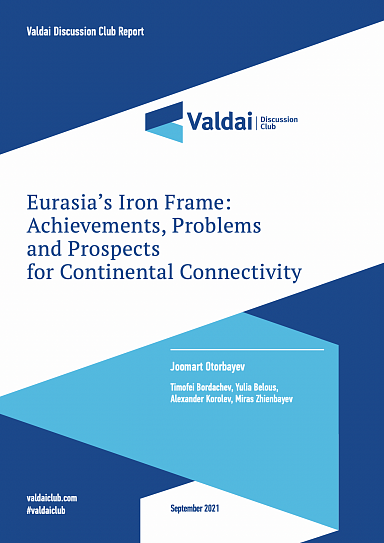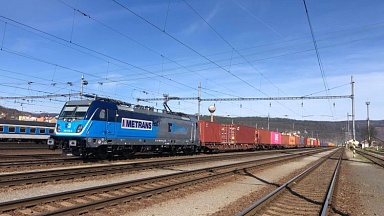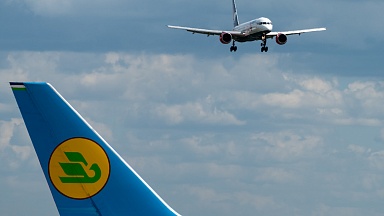Historically, transport links have played the most important role in consolidating geopolitical spaces, nation states, and groups of states. The oldest examples of statehood arose along rivers, so rivers almost never served as natural boundaries. As humankind evolved, it enhanced the natural capabilities for interconnection between regions by building roads, and in the 19th century, rail, and then air services in the 20th century.
The decline of large states and wider unions was accompanied by the degradation of their internal transport systems. The best-known example of this is the Great Silk Road going unused for several centuries, a link that had connected Eurasia but dried up amid conflicts between states and the development of alternatives for global commerce. For several centuries, land routes in Eurasia were replaced by maritime shipping routes, which supported the overwhelming military domination of Europe and then America.
That is why the myth of Central Eurasia’s «continental curse» is one of the most persistent and why these countries became adamant about gaining access to the sea. They needed to become part of globalisation one way or another. Russia, as the largest Eurasian power, spent a significant part of its imperial energy on vying for the seas, often to the detriment of development in other areas. This centuries-old pattern continues to convince land-locked states of their inferiority and inevitable dependence on countries with access to trade routes via the sea. Access to sea trade routes is often viewed as a panacea and a guarantee of participation in international economic affairs with all the benefits they provide.
However, in reality, access to the sea per se is not that critical for joining international economic affairs or being shut out of them. Sea trade routes are not open to everyone and can be unsafe. They can make users dependent on powers with military capability to control maritime expanses. However, such powers strongly rely on their ability to control the sea rather than on creating conditions for peace on land, and are therefore far less likely to consider others’ interests. So all a country needs is the widest possible choice of routes and access to potential trade partners.
The development of trade routes overland is up to countries that are neighbours and therefore have more reason to agree. The main conditions for this are an objective economic context, political circumstances and the decision by governments striving to unlock the potential of their economies through cooperation with their neighbours. There is no country in today’s Eurasia that could and would try to establish a unified order across the continent and control it. This means countries need to negotiate, given the increasingly obvious benefits of surface-based trade routes between Asia, Central
Asia, Russia and Europe. The agreements reached between them cannot be isolated from a more global system of economic ties either.
In the past few years, the economic feasibility of such cooperation has manifested itself in the consistent expansion of through traffic, or transiting, which has promoted the development of related infrastructure and industries. So far, Russia, as the largest geopolitically and technologically advanced player, is seeing most of the benefits from the exponential growth of surface transport. However, one of Russia’s most important interests is strengthening its neighbours’ sovereignty and economic viability. The countries in Central Asia, small and medium-sized states, apprehensive of remaining in the peripheral shadow of Russia, which has objective advantages, are trying, at least symbolically, to diversify their foreign economic relations and their transport and logistics capabilities to promote the above relations. This means Russia is interested in the development of the neighbouring economies and needs to facilitate the Central Asian countries’ connectivity to its own railway system, and also help them develop their own systems, which would make the railway network the most important connectivity factor in Greater Eurasia with a resilience against global challenges.
Here are some of the most important factors that support the feasibility of developing Eurasia’s rail-based transport and logistics systems. First, the region has been politically stable for some time. The only conflict zones are in its peripheral regions — Ukraine, the Middle East, South Asia and Afghanistan. Second, China continues to pursue an export-oriented and resource-importing policy, which formed the basis for the Belt and Road concept Beijing launched in 2013. Third, Eurasia’s new economic integration has significantly simplified the regulation of land trade. Fourth, new technological opportunities are available for land trade based on rail transport.
A long period of relative political stability in the central part of Eurasia (not a single serious military clash between states in the 30 years since the end of the Cold War and the USSR) and a shift in international trade routes have supported the region’s integration into the global and macro-regional transport and logistics system. This is still relatively new expansion. Relative, because in Central Asia, railway corridors began to develop and function quite effectively during the period these countries were part of the USSR. The common Soviet heritage, the transport system that started with the Turkestan-Siberian railway, is still in service. Built from 1927 to 1930, the Turksib was one of the central construction projects in the first Soviet five-year plan and aimed to tie Soviet territory together in the same way the Trans-Siberian Railway consolidated Russia at the end of the 19th century.
However, until recently, Central Asia lacked the opportunity or the need to use its transiting potential outside the region or its ties with Russia. After the Soviet Union, its transport and logistics potential was limited by the difficulties of the transition period and the impossibility of full integration into a global economy dominated by sea trade routes and major coastal players — the United States, Europe, and later also China. Naturally, immediately after gaining independence, the region’s countries began to look for ways out of the unnatural stagnation imposed on them by geographical and historical realities. But it was only recently that global transport and logistics processes encouraged them to realise these aspirations.
This might sound aggressive, but in recent years, we have seen something we might call the onset of a Eurasian railway revolution. Due to objective trends in global markets, in a few years, Central Asia will improve connectivity between East and West through the highly efficient China — Central Asia — Russia — Europe railway route, and will also become a transit hub for new transport routes running in all four cardinal directions.
The Central Asian governments are noticeably upping their efforts to turn the region into a crossroads of transport corridors that connect East with West, North with South, and to link their strategic future through common regional efforts and actions. To accomplish this, they are increasing their transit capabilities to international significance. The total length of the railway lines in the Central Asian countries exceeds 22,000 kilometres. Kazakhstan has the largest and most comprehensively operated railway system accounting for 66 percent of the region’s total railway route-kilometres and it handles 84 percent of all freight traffic. About 18 percent of regional railways cross Uzbekistan, accounting for about 11 percent of all traffic. Turkmenistan has approximately 12 percent of the region’s railways and 4 percent of all traffic.
If the ambitious projects in this area are successfully implemented, the prospects for turning Central Asia into a fast-growing region will become more realistic. This should also benefit Russia, which controls the main surface trade routes in Eurasia. Since Moscow is not seeking to increase its responsibility for its neighbours’ survival, it should be interested in promoting opportunities for their independent development.




